Neuroptera (net-winged insects) consisting about 6,000 species. Neuropterans are soft-bodied insects have four many-veined membranous wings all about the same size, large lateral compound eyes, chewing mouthparts consisting of strong mandibles, and undergo complete metamorphosis. Some neuropterans have specialised sense organs in their wings or have structures that allow their wings to interlock together during flight. While most adults of many groups are predatory, some only consume nectar.
The larvae of most families are predators with elongated mandibles adapted for piercing and sucking. The larval body form varies between different families, but generally have three pairs of thoracic legs, each ending in two claws. The abdomen often has adhesive discs on the last two segments. Many eat aphids and other pest insects, and some have been used for biological control. Larvae in various families cover themselves in debris as camouflage. Antlions take this to the extreme by burying themselves and ambush prey from pitfall traps constructed in the soil. A few mantispids are parasites of spider egg sacs.
Suborder Hemerobiiformia (Lacewings and Allies)
Family Chrysopidae (Green Lacewings)
There are about 85 genera of Green lacewings with 1,300–2,000 species. Since they are the most familiar neuropterans to many people, they are often simply called “lacewings”. Since most of the diversity of Neuroptera are properly referred to as some sort of “lacewing”, common lacewings is preferable.
Source: Wikipedia
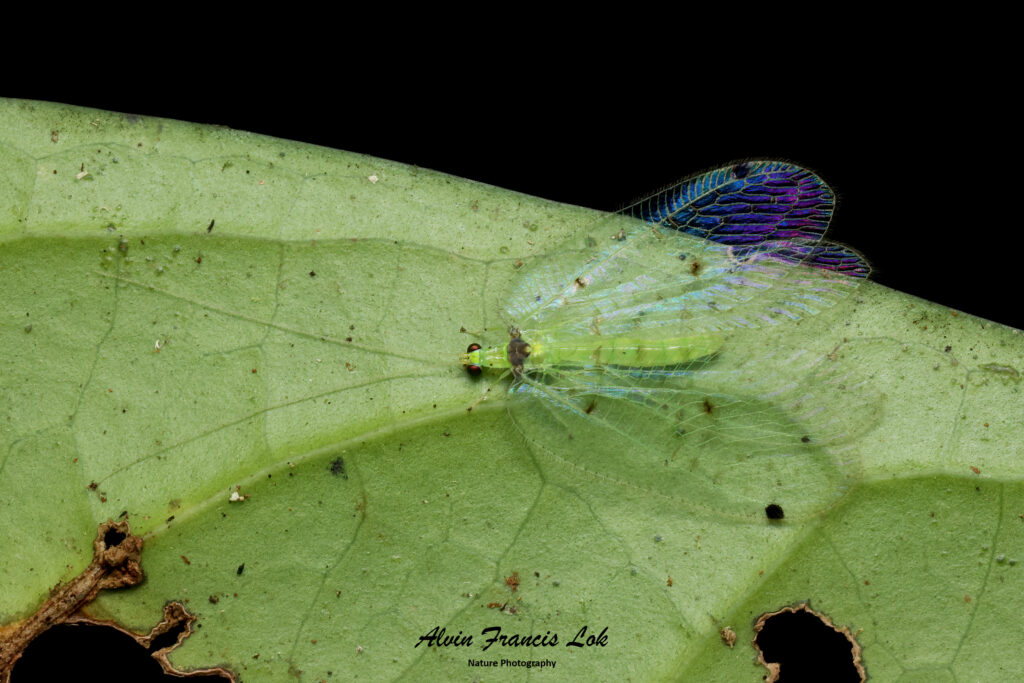
(Sarawak, Malaysia)
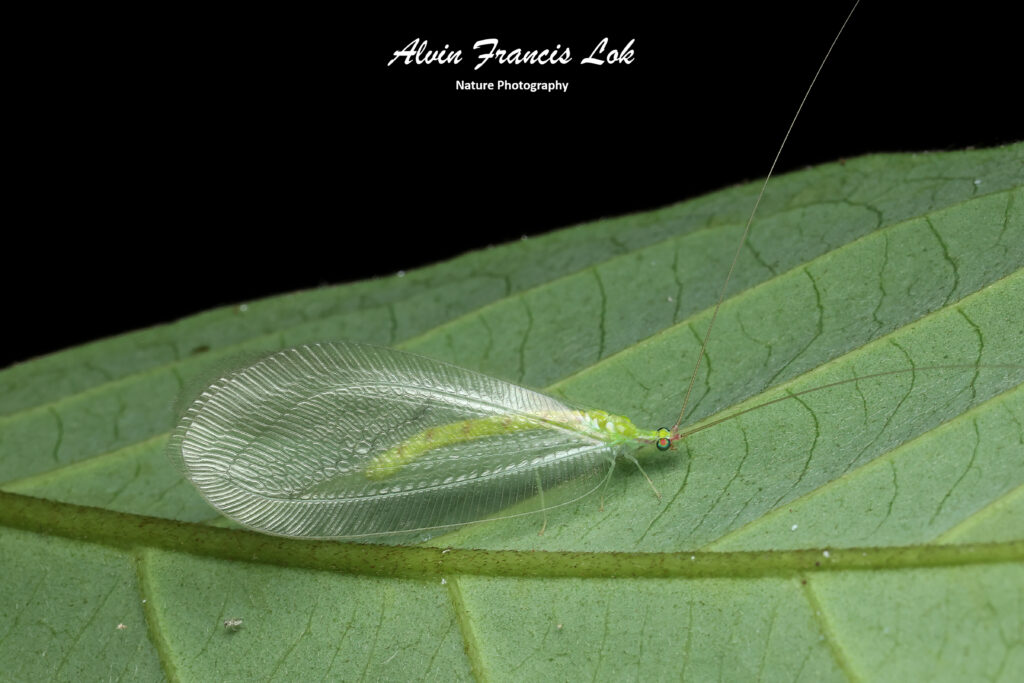
(Doi Inthanon, Thailand)

(Singapore)
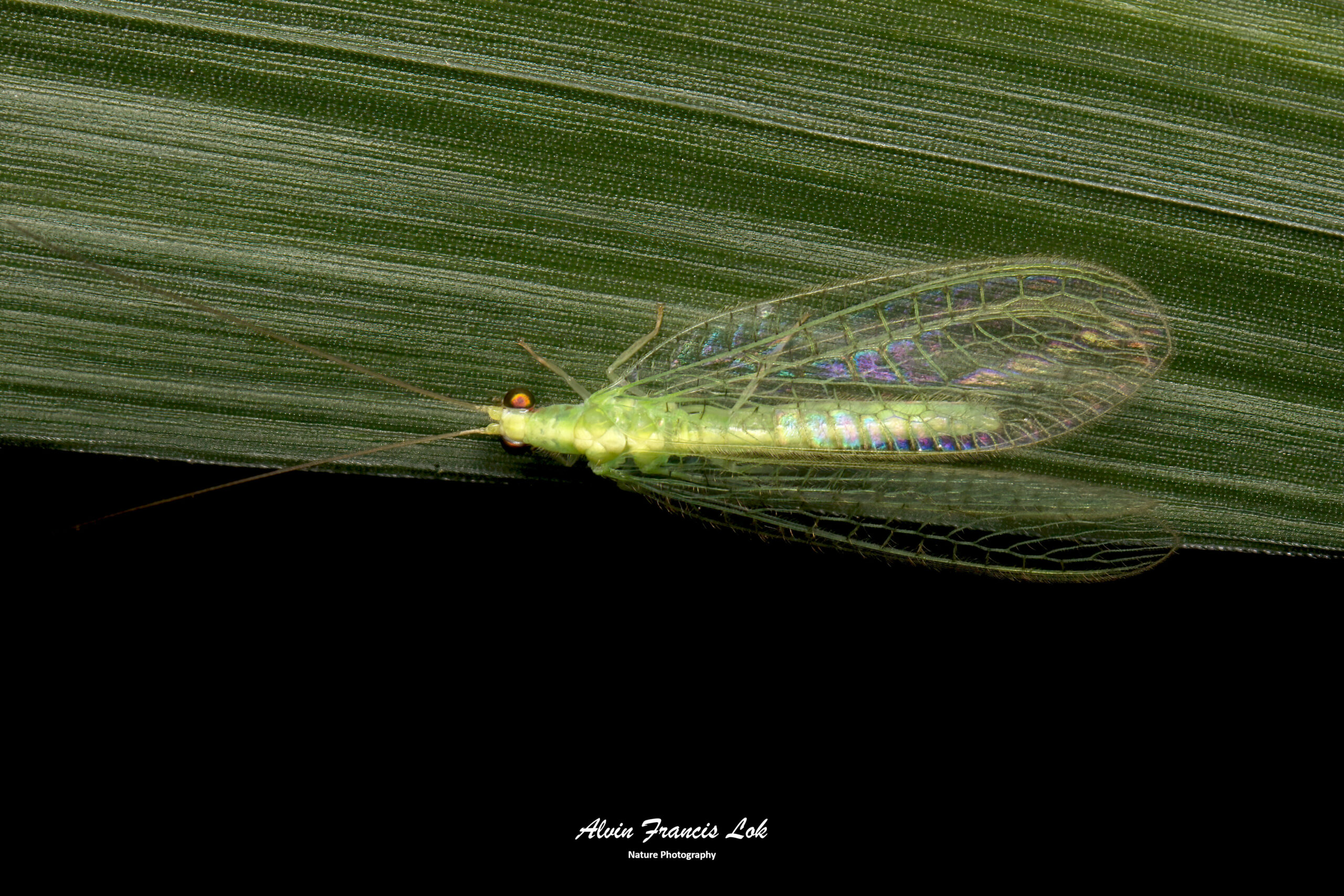
(Singapore)
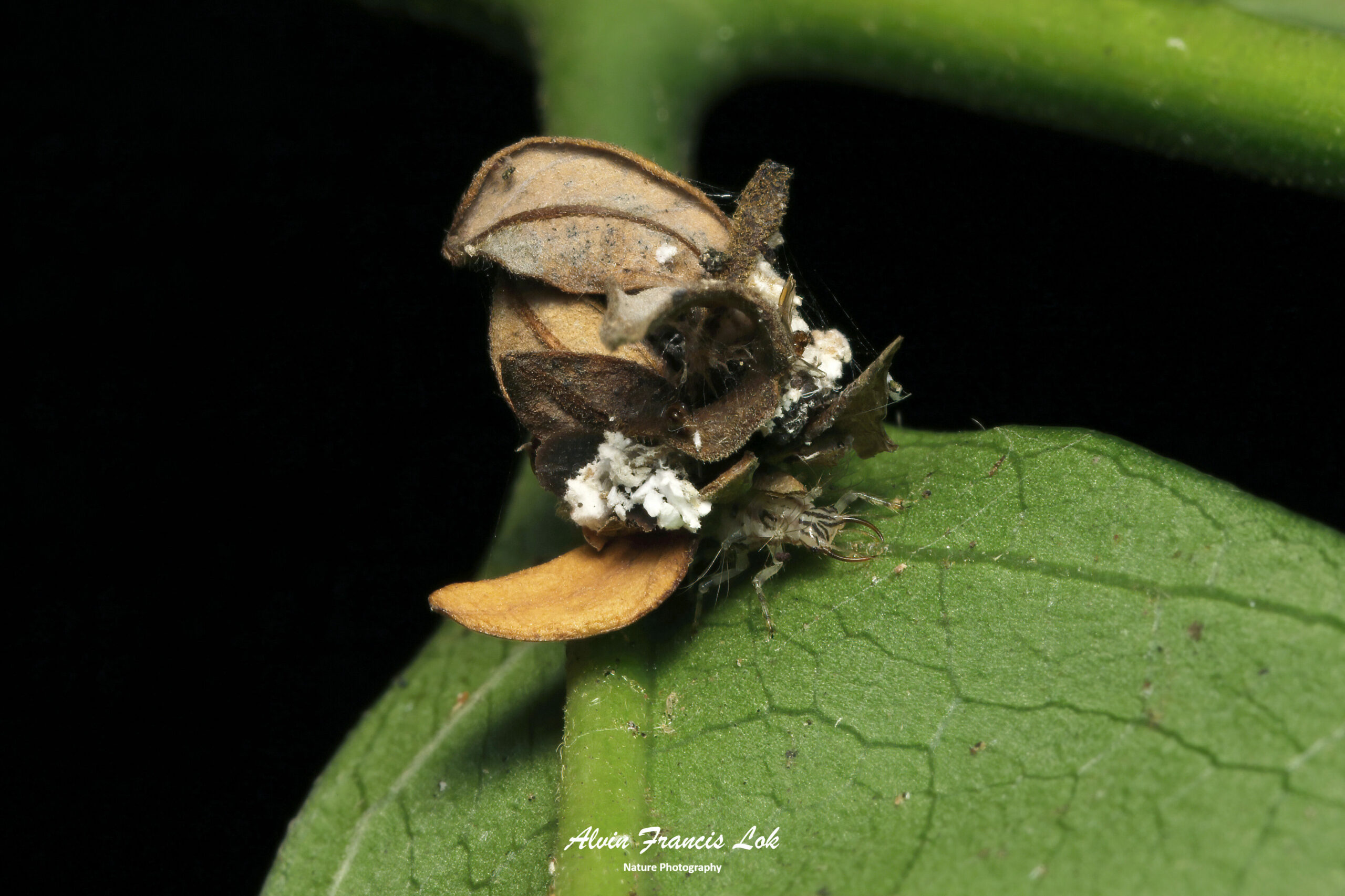
(Singapore)
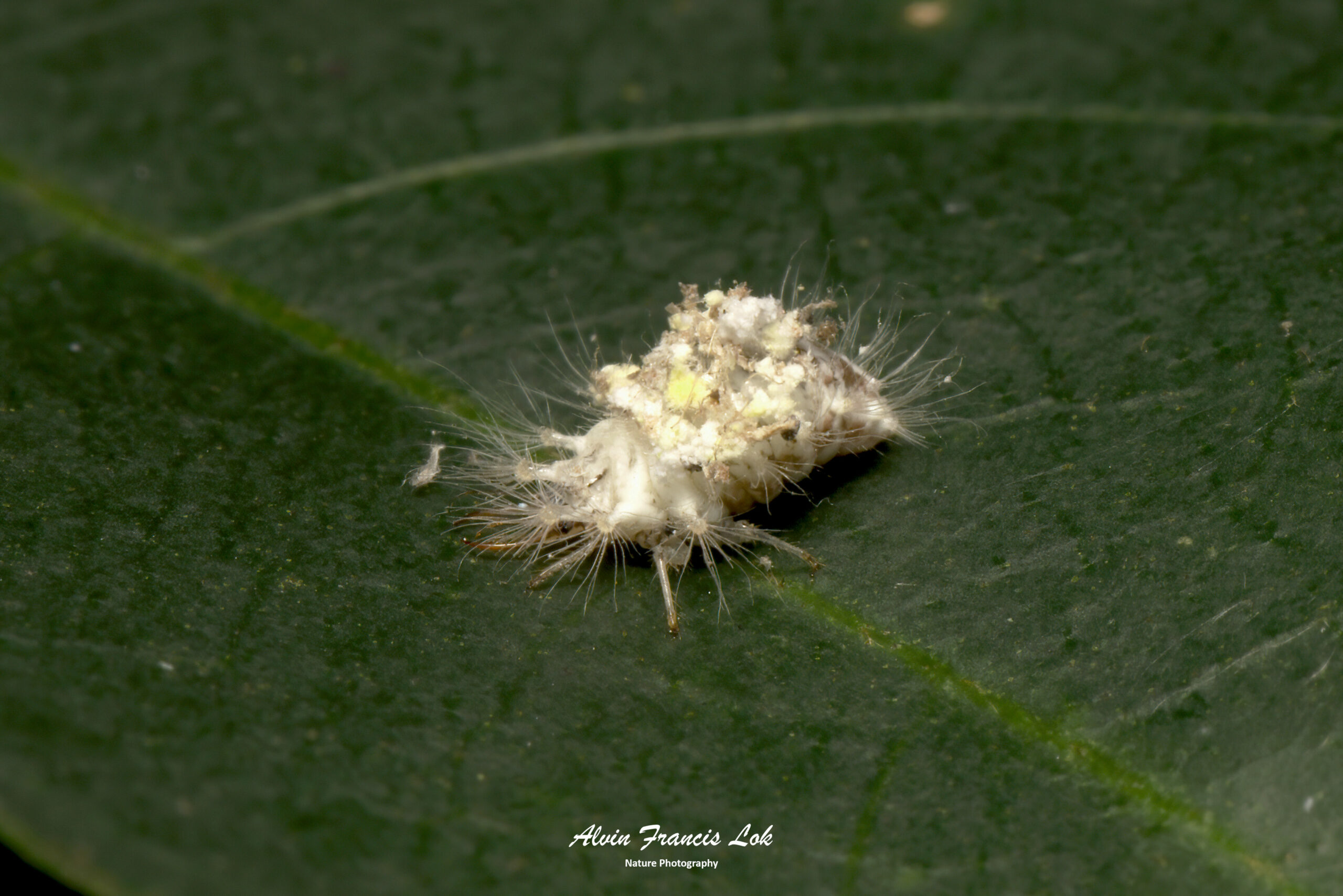
(Singapore)
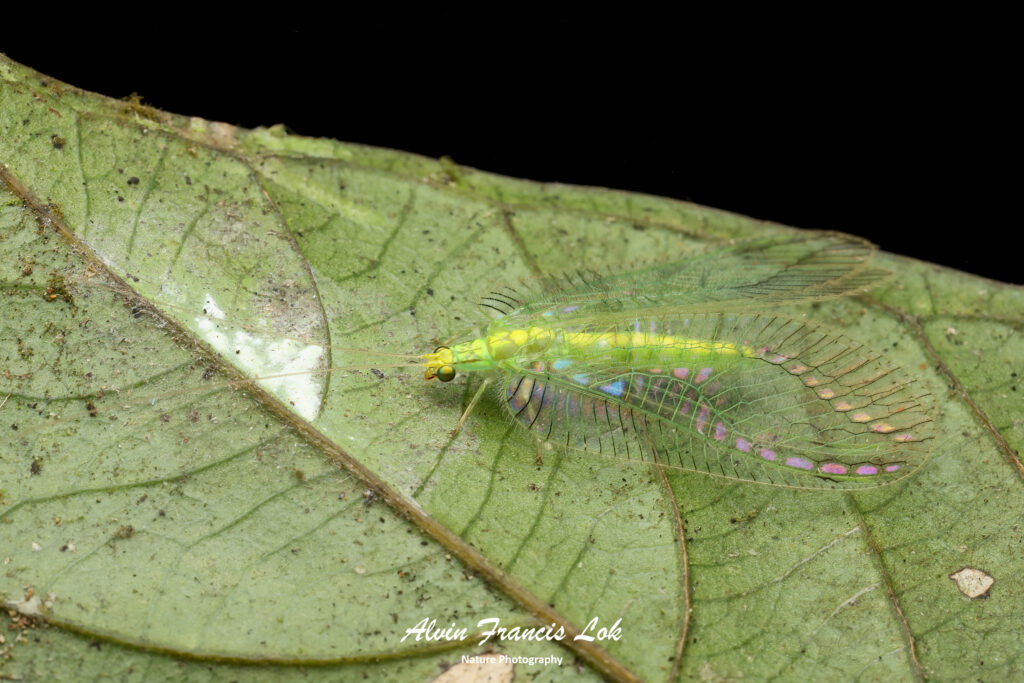
(Sabah, Malaysia)
Family Hemerobiidae (Brown Lacewings)
Hemerobiidae or commonly known as brown lacewings, comprising about 500 species in 28 genera. Most are yellow to dark brown, but some species are green. They are small, most have forewings 4–18 mm long. These insects differ from the somewhat similar Chrysopidae (green lacewings) not only by the usual coloring but also by the wing venation: hemerobiids differ from chrysopids in having numerous long veins (two or more radial sectors) and forked costal cross veins. Some genera like Hemerobius, Micromus, Notiobiella, Sympherobius, Wesmaelius are widespread, but most are restricted to a single biogeographical region. Some species have reduced wings to the degree that they are flightless.
Hemerobiids, like chrysopids, are predatory, especially on aphids, both as larvae and adults. The species Micromus tasmaniae is bred for biological pest control.
Source: Wikipedia
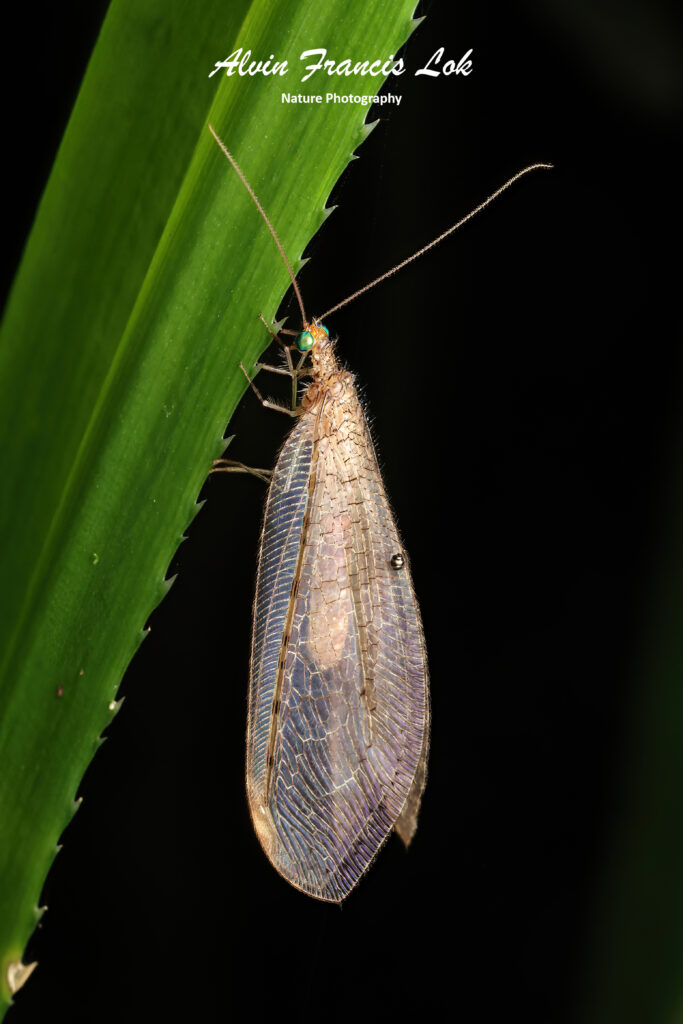
(Andasibe, Madagascar)
Family Ithonidae (Giant and Moth Lacewings)
Ithonidae is a small family commonly called moth lacewings and giant lacewings. The family contains a total of ten living genera, and over a dozen extinct genera described from fossils. The modern Ithonids have a notably disjunct distribution, while the extinct genera had a more global range. The family is considered one of the most primitive living neuropteran families. The family has been expanded twice, first to include the genus Rapisma, formerly placed in the monotypic family Rapismatidae, and then in 2010 to include the genera that had been placed into the family Polystoechotidae. Both Rapismatidae and Polystoechotidae have been shown to nest into Ithonidae sensu lato. The larvae of ithonids are grub-like, subterranean and likely phytophagous (plant feeding).
Source: Wikipedia
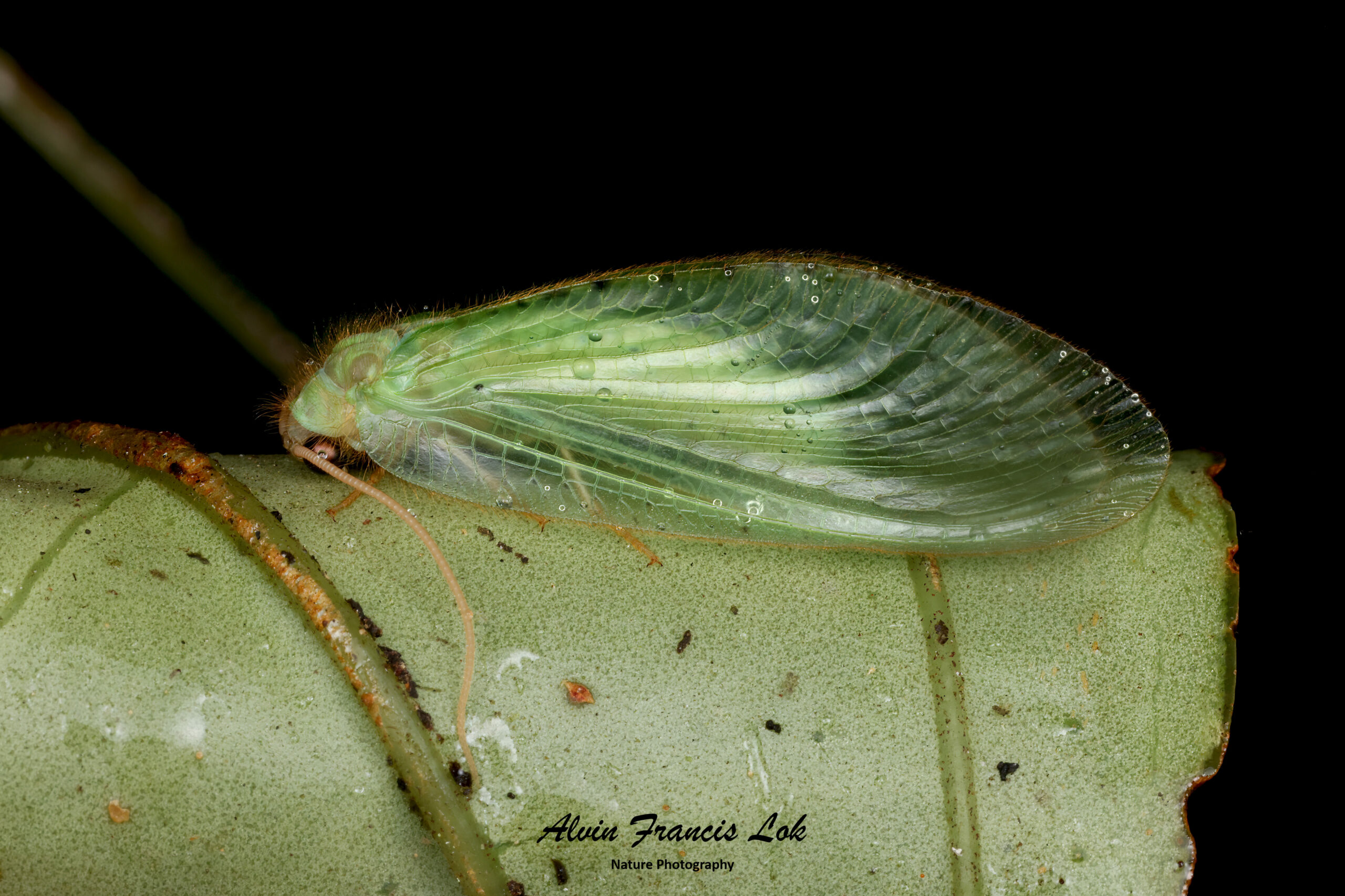
(Sabah Malaysia)
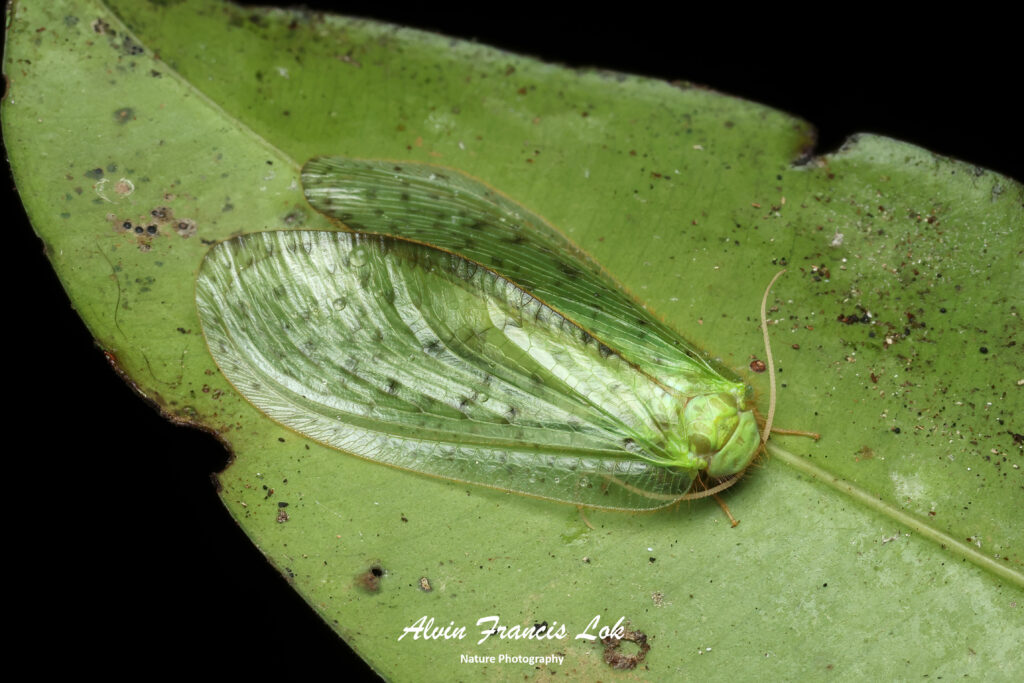
(Pahang, Malaysia)
Family Mantispidae (Mantidflies)
Mantispidae are commonly known as mantidflies, mantispids, mantid lacewings, mantisflies or mantis-flies, and is a family of small to moderate-sized insects in the order Neuroptera. There are many genera with around 400 species globally, mostly distributed in the tropics and subtropics. Only five species occur in Europe. As their names suggest, members of the group possess raptorial forelimbs similar to those of the praying mantis, a case of convergent evolution.
Source: Wikipedia
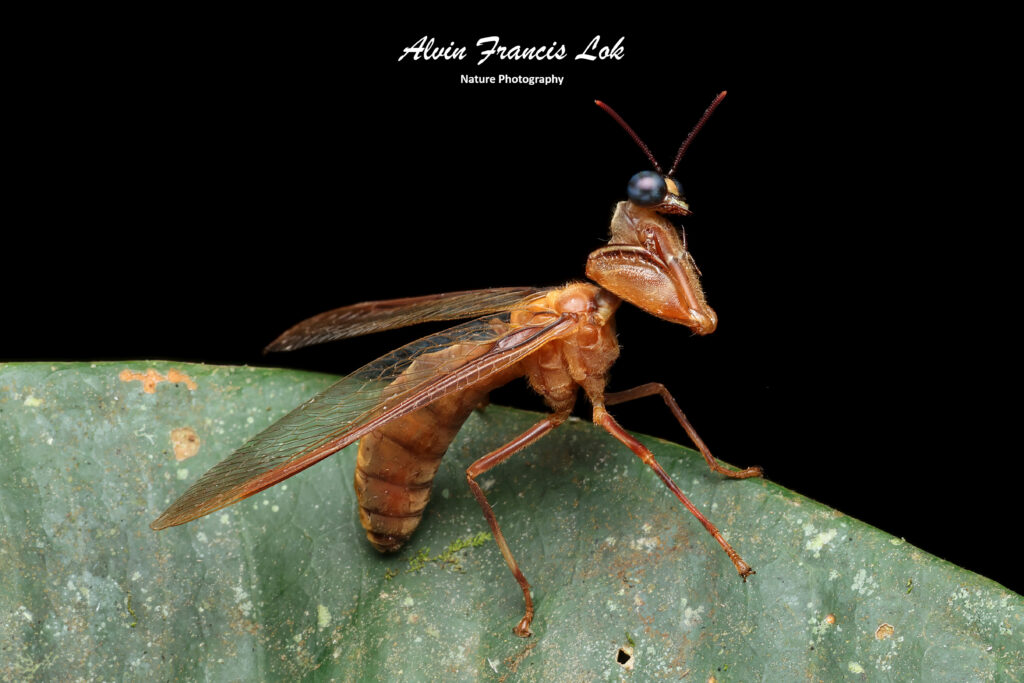
(Pahang, Malaysia)
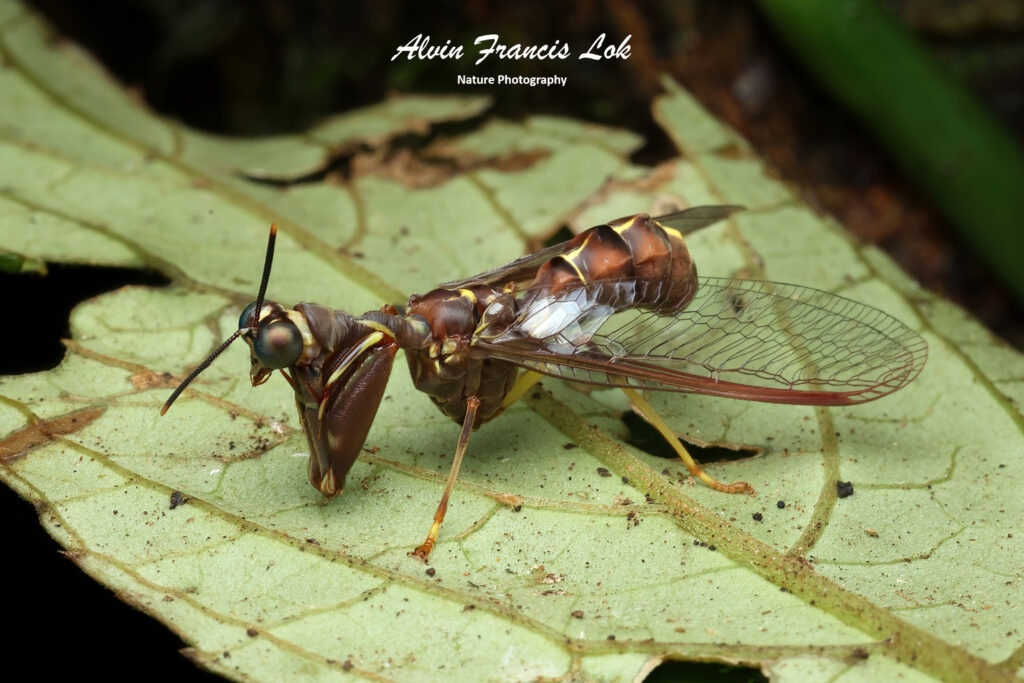
(Sabah, Malaysia)
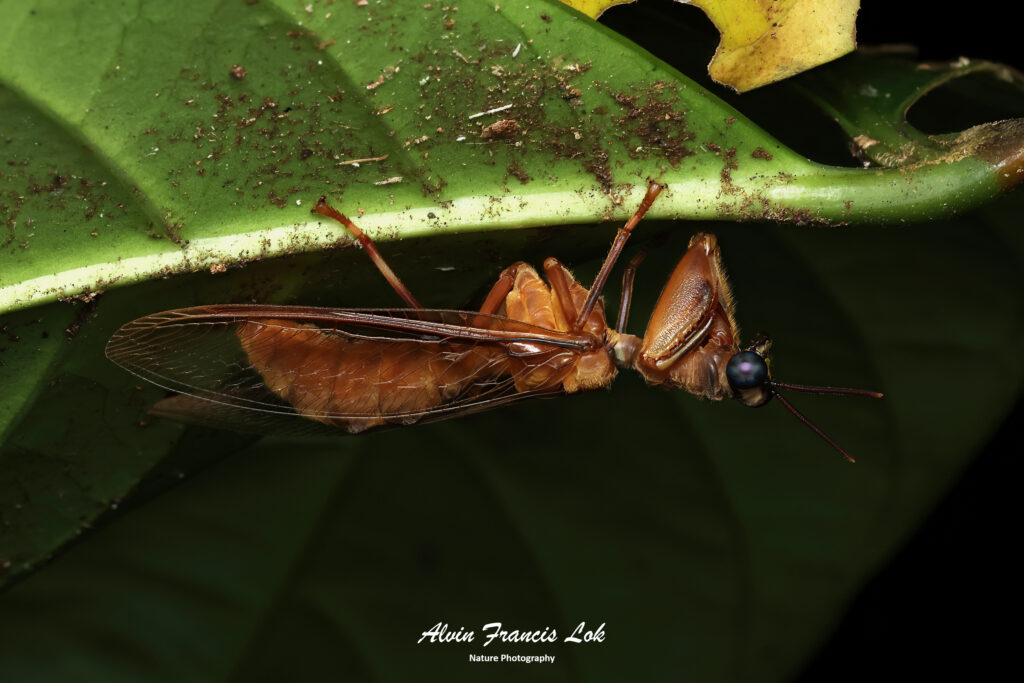
(Sarawak, Malaysia)

(Johore, Malaysia)
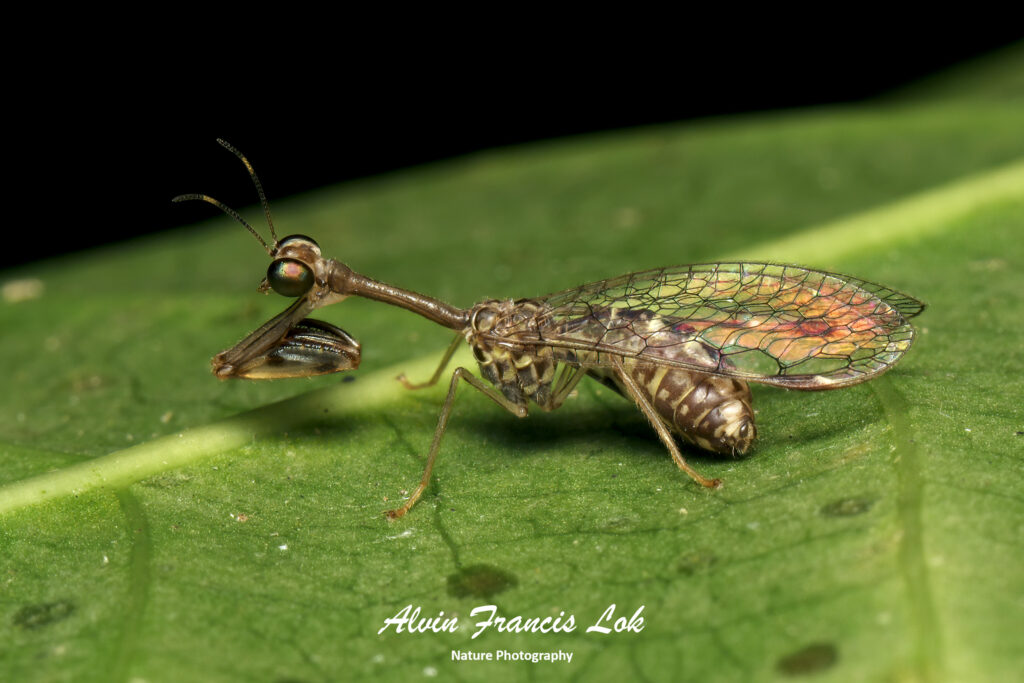
(Singapore)
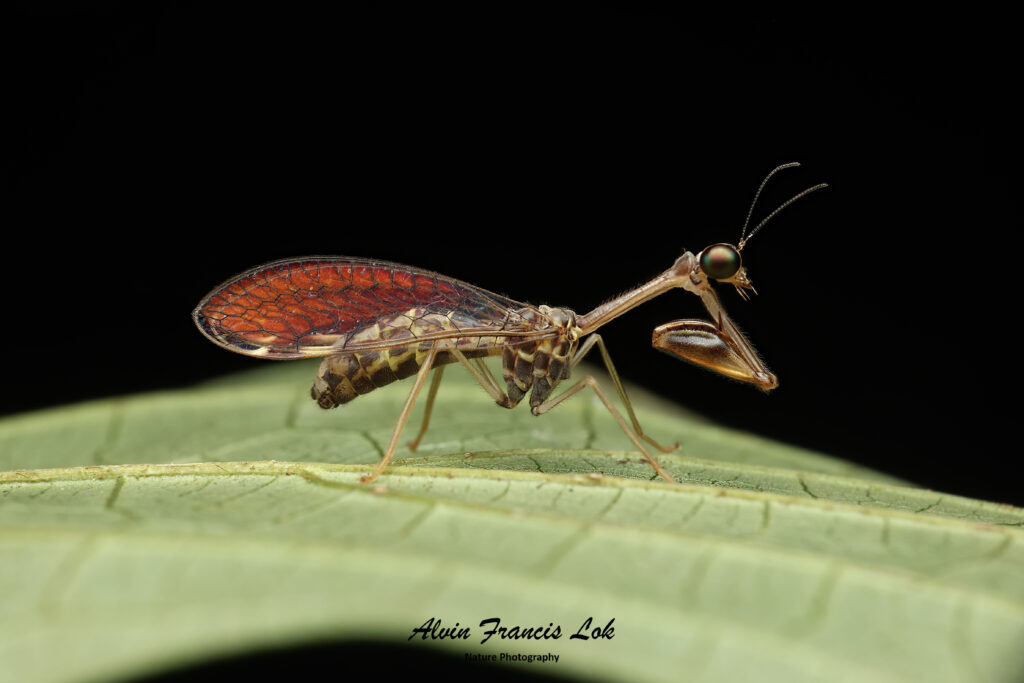
(Kalimantan, Indonesia)
Suborder Myrmeleontiformia
Family Myrmeleontidae (Antlions and Owlflies)
Subfamily Ascalaphinae (Owlflies)
Ascalaphinae is the type subfamily of the neuropteran owlfly family (Ascalaphidae), which is treated as a distinct family from Myrmeleontidae which contains both antlions and owlflies. Here I will treat it as a subfamily and the taxa description is for descriptive purposes and not for the accuracy of higher taxonomic classification.
Most owlflies species are found in the tropics. Their large compound eyes are divided by a ridge, thus sometimes known as split-eyed owlflies.
They are insectivores, cumbersome fliers and lack the strong mouthparts of dragonflies, which the superficially resemble, despite not being closely. This restricts them to small and defenseless prey. The larvae on the other hand resemble antlions in appearance and habits and are voracious ambush predators, able to tackle prey like ants that will not be eaten without a struggle.
Source: Wikipedia
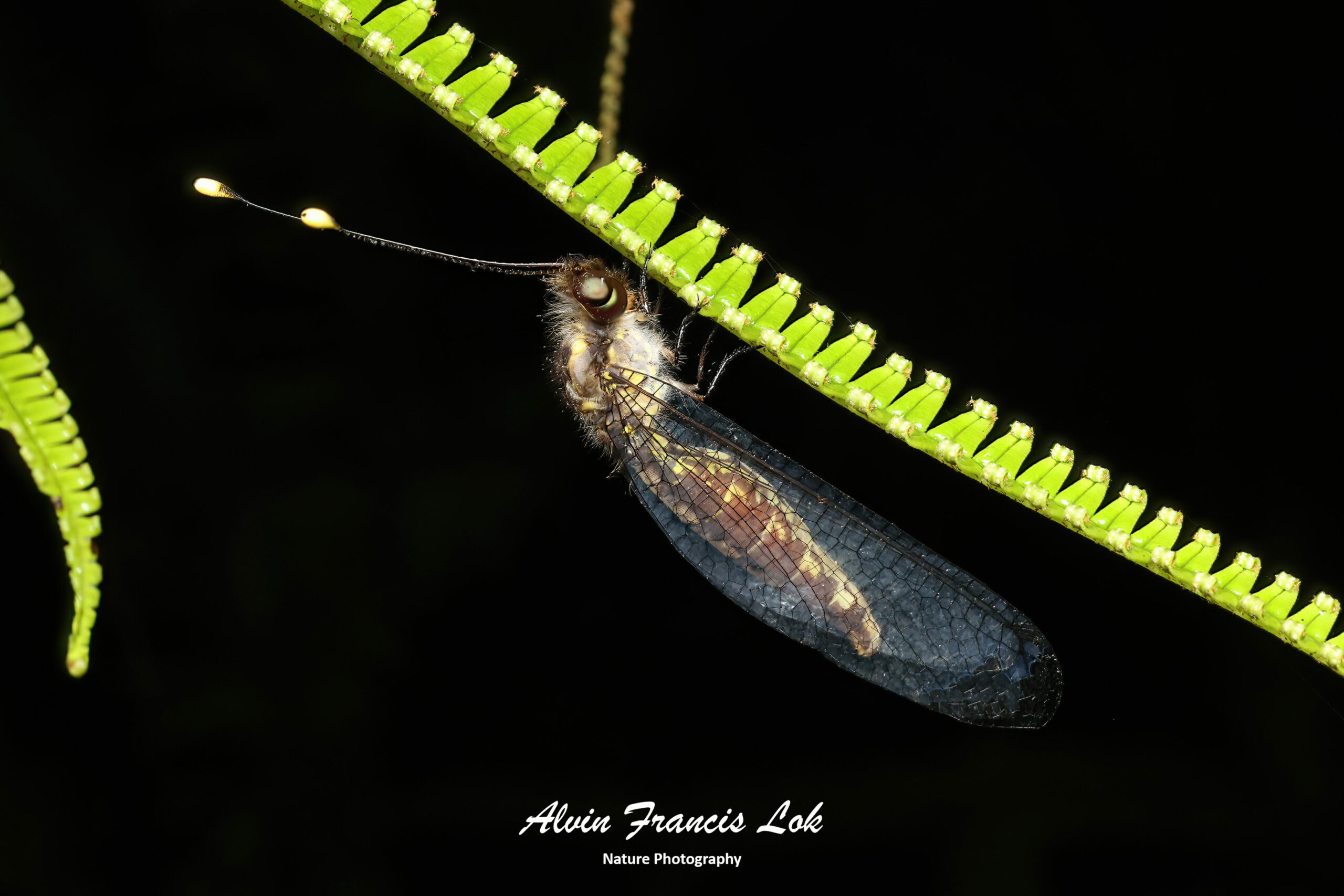
(Sabah, Malaysia)
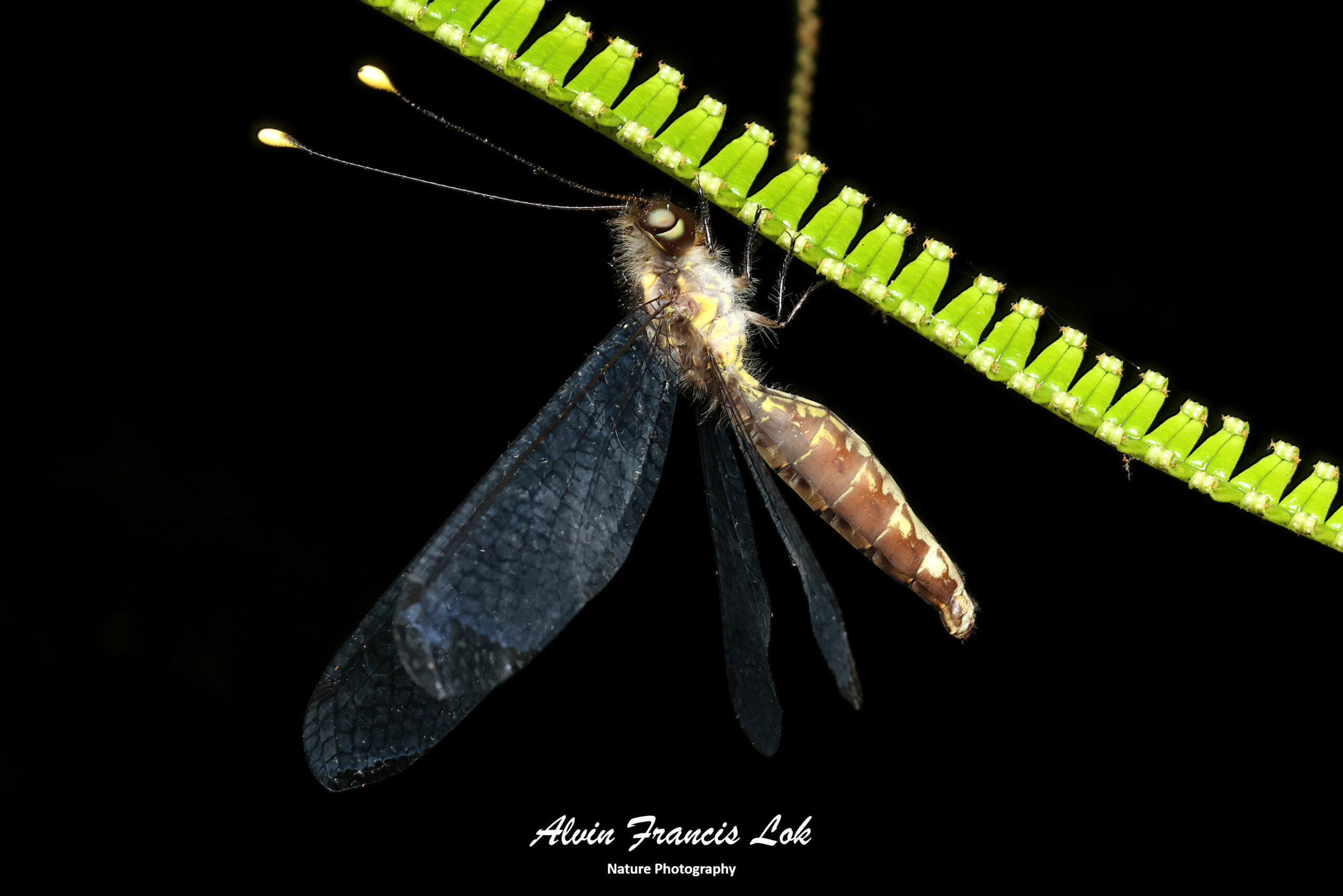
(Sabah, Malaysia)

(Singapore)
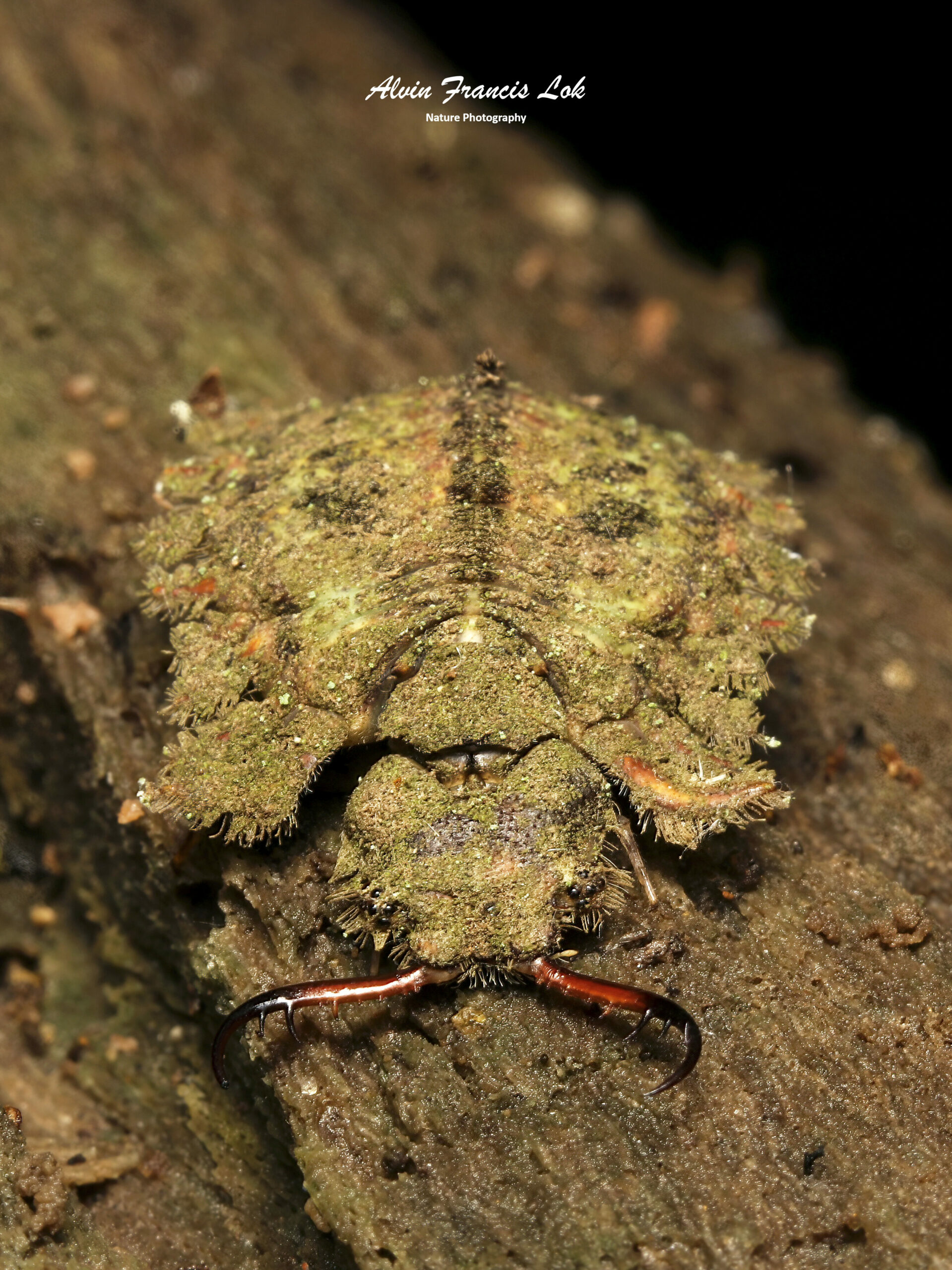
(Singapore)
Subfamily Myrmeleontinae
Tribe Myrmeleontini
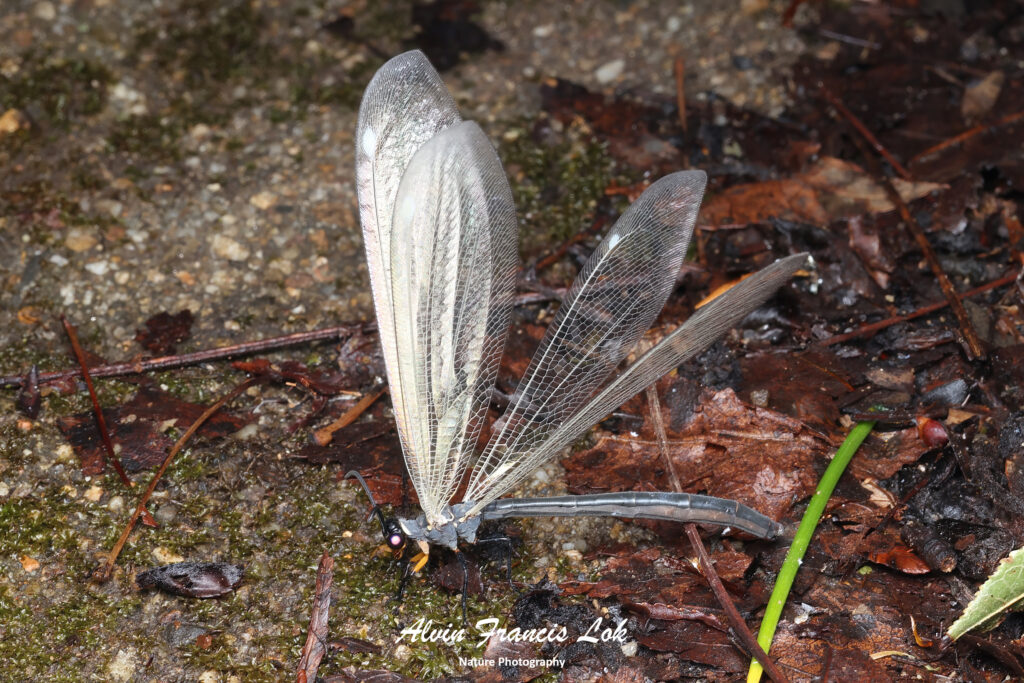
(Doi Inthanon, Thailand)